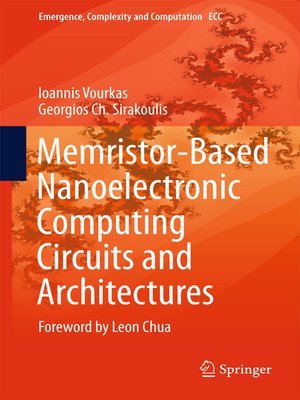Memristor-Based Nanoelectronic Computing Circuits and Architectures
ebook ∣ Foreword by Leon Chua · Emergence, Complexity and Computation
By Ioannis Vourkas

Sign up to save your library
With an OverDrive account, you can save your favorite libraries for at-a-glance information about availability. Find out more about OverDrive accounts.
Find this title in Libby, the library reading app by OverDrive.



Search for a digital library with this title
Title found at these libraries:
| Library Name | Distance |
|---|---|
| Loading... |
This book considers the design and development of nanoelectronic computing circuits, systems and architectures focusing particularly on memristors, which represent one of today's latest technology breakthroughs in nanoelectronics. The book studies, explores, and addresses the related challenges and proposes solutions for the smooth transition from conventional circuit technologies to emerging computing memristive nanotechnologies. Its content spans from fundamental device modeling to emerging storage system architectures and novel circuit design methodologies, targeting advanced non-conventional analog/digital massively parallel computational structures. Several new results on memristor modeling, memristive interconnections, logic circuit design, memory circuit architectures, computer arithmetic systems, simulation software tools, and applications of memristors in computing are presented. High-density memristive data storage combined with memristive circuit-design paradigms and computational tools applied to solve NP-hard artificial intelligence problems, as well as memristive arithmetic-logic units, certainly pave the way for a very promising memristive era in future electronic systems. Furthermore, these graph-based NP-hard problems are solved on memristive networks, and coupled with Cellular Automata (CA)-inspired computational schemes that enable computation within memory. All chapters are written in an accessible manner and are lavishly illustrated. The book constitutesan informative cornerstone for young scientists and a comprehensive reference to the experienced reader, hoping to stimulate further research on memristive devices, circuits, and systems.







